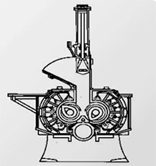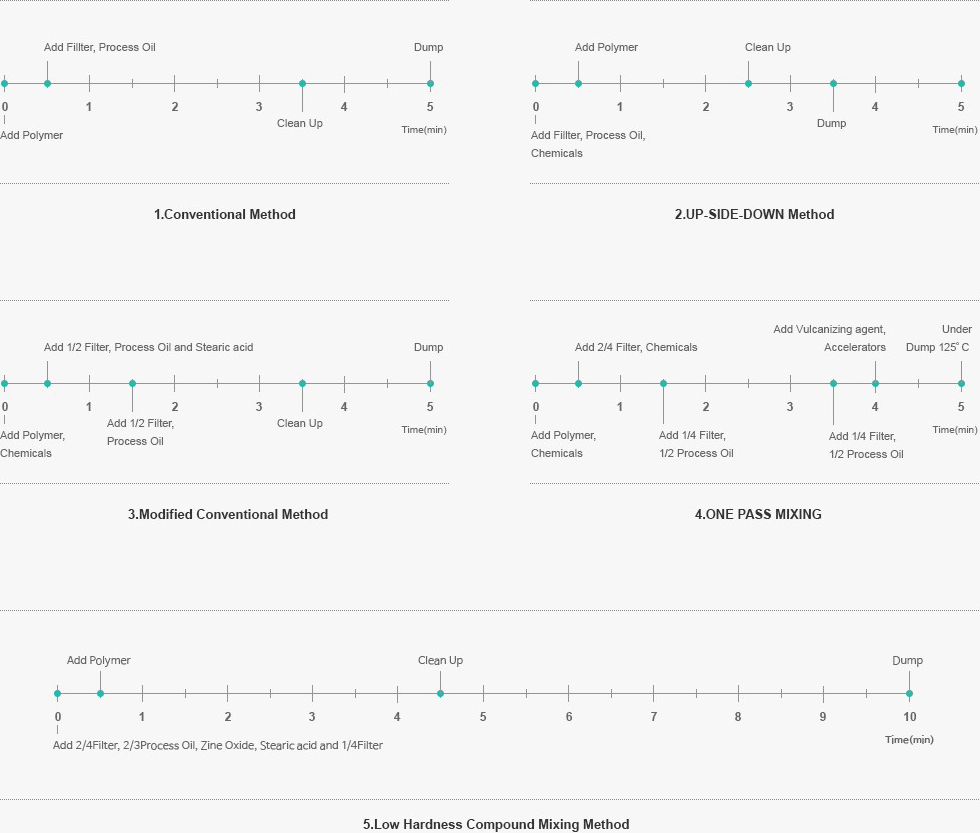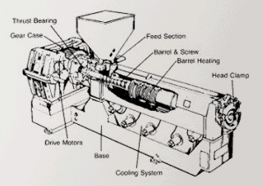Manufacturing process of EP(D)M
-
STEP 01
Material preparation
Store material / Prepare catalyst /
Control concentration -
STEP 02
Polymerization
Material+Catalyst reaction /
Product feature determined according to material composition and catalyst -
STEP 03
Catalyst removal
Remove catalyst with emulsifier /
Control product color /
Dispose of catalyst water as waste -
STEP 04
Standardization
Product size standardization /
Add oil for oil product /
Remove foreign substance in product -
STEP 05
Collection and purification of solvent monomer
Collect and purify solvent /
Collect monomer with no reaction -
STEP 06
Dehydration and drying
Primary moist removal /
Secondary volatile matter removal /
Transfer and dry -
STEP 07
Molding and inspection
Rubber shaping / Weight inspection /
Inspection of foreign substance in rubber -
STEP 08
Storage / Shipment
Store in automatic warehouse /
Rubber shipment
Processing of EP(D)M
KEP EP(D)M synthetic rubber has excellent weatherability and chemica resistance. Superior mechanical properties including processability are maintained even with high filler loading compound. The processing characteristics of the EP(D)M rubber compound is determined by the content and structure of the filler and the type and content of the process oli as well as the structure and type of the base polymer. Therefore, selecting adequate compounding ingredients is essential for the design of EP(D)M rubber compound to obtain the required properties and superior workability of the product.
The compounding ingredients used to improve the physical properties of the final rubber product and to get the cost effective compounds are called fillers. All types of fillers generally used in rubber industry are available for EP(D)M. Though it varies more or less by the molecular weight, ethylene content, and diene content, lots amounts of fillers can be added to EP(D)M synthetic rubber compared with other types of syntetic rubbers.
POLYMER
Provides the basic characteristics of the compound and selected according to the use of the final vulcanized product. For secific purposes, the processabillty and physical properties of the EP(D)M synthitic rubber can be coordinated by blending.
CARBON BLACK
The most widely used reinforcing filler is the carbon black. Physical properties(Stength and hardeness) of final rubber products are determined by the type and content of the carbon black.
CARBON BLACK Characteristic Factors
icle Size and StructureSurface area & ActivityDegree of aggregation
MINERAL FILLER
Mineral fillers are used for the color compound, for processabillty improvement of black color compounds, or for cost reduction. Various mineral fillers are available according to the purpose such as reinforcing, procssabillity, or economy. As is the carbon black, the size, shape, and surface characteristics of particle of the mineral fillers infuence the physical properties of the rubber product. Calcium carbonate, clays, TALC are typical mineral fillers. Aluminum hydroxid is used in flame resistant rubber products.
PLASTICIZER
Generally, EPDM is very compatible with paraffinic type oils. Armonatic oils should be avoided because they have less compatiblity with EPDM on cure. Viscosity is an important parameter in case of selection an plasticizer. im general, the higher viscosity oils enhance physical property, improve heat resistande, and reduce compound viscosity but case porous problem on extruded profile.











